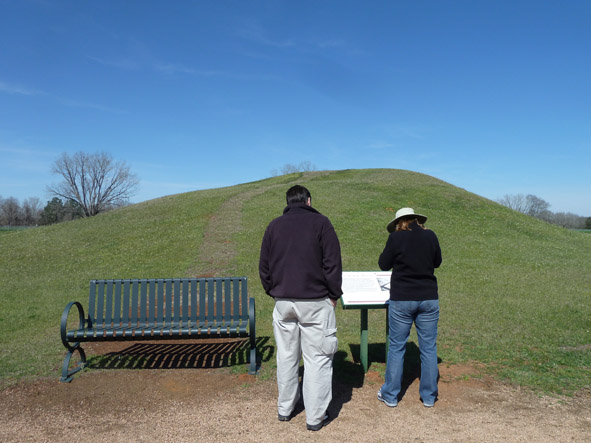
Andrew
Collins (Pic credit: Shane van Troxel)
N
E W S A R C H I V E 2 _- _2
0 1 1 -2 0 1 5
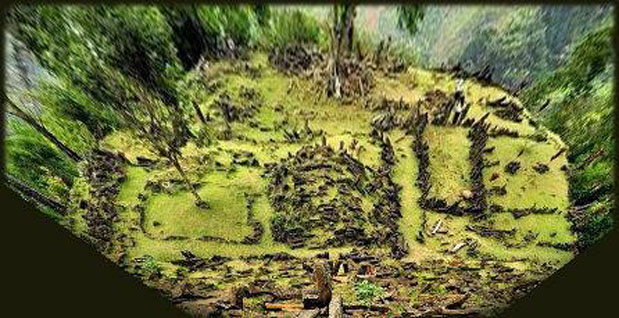
Corrected
perspective of Gunung Padang's Terrace 1 to creative an
overhead projection
(pic credit: Rodney Hale)
G
U N U N G - P A D A N G
SOUTHEAST
ASIA'S LARGEST AND MOST ENIGMATIC MEGALITHIC COMPLEX. IS IT A PYRAMID HILL 12,000
YEARS OLDER THAN GOBEKLI TEPE?
Andrew Collins reports on the site of Gunung Padang in Indonesia's West Java province, reviewing recent proposals concerning its greater antiquity, and exploring the megalithic complex's orientation, alignment and suspected original function
K
A R A H A N T E P E
GÖBEKLI TEPE'S SISTER SITE
ANOTHER TEMPLE OF
THE STARS?
Karahan Tepe might be described as a sister site to the more widely known Pre-Pottery Neolithic sanctuary of Göbekli Tepe. Both are situated in mountainous terrain in southeast Anatolia (the modern-day republic of Turkey), just a short distance from the ancient cities of Sanliurfa and Harran. Both feature settings of T-shaped stone pillars, which are anthropomorphic in nature and bear carvings either in high relief or 3D. Both were built and then abandoned during the Pre-Pottery Neolithic B period. Yet whereas Göbekli Tepe has received widespread attention, being excavated since 1995 under the auspice of the German Archaeological Institute in partnership with the Sanliurfa Archaeological Museum, Karahan Tepe remains relatively obscure.
Andrew Collins, who first visited Karahan Tepe in 2004, brings you a comprehensive report on the site. He demonstrates that Karahan Tepe was most likely a regional centre for the veneration of natural forces, perhaps associated with the symbol of the snake. On site investigations indicate the rocky outcrop could have acted as a backsight for observations of the bright star Deneb (a Cyg) in the Cygnus constellation and the Milky Way's Great Rift, which in the proposed epoch of construction, ca. 8500-8000 BC, would have set into a prominent flat-topped hill located 1 mile (1.6 kilometres) north-northwest of Karahan Tepe. Also discussed is Karahan's true name, Keçili, as well as the sanctuary's possible relationship to Göbekli Tepe, 23 miles (37 kilometres) away, and the suspected changes in cosmologically beliefs and practices that accompanied the Neolithic revolution in southwest Asia, ca. 9000 BC.
THE
DEATH OF PROFESSOR
KLAUS SCHMIDT (1953-2014)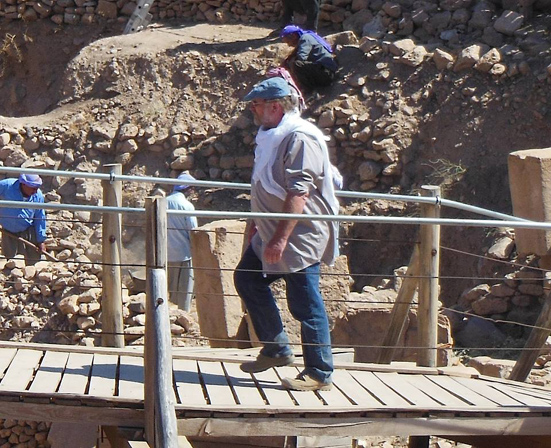
Prof
Klaus Schmidt at Göbekli Tepe in September 2012
Professor
Klaus Schmidt (1953-2014), the German archaeologist who masterminded the resurrection
of Göbekli Tepe, died suddenly on July 20 of a heart attack. This tragedy
has come as a complete shock to the ancient mysteries and archaeological communities,
and our condolences go out to his family and friends. Without him, and his rediscovery
of the site in 1994, the world might never been able to gaze upon the wonders
that are Göbekli
Tepe. Indeed, he himself said back then that if he did not turn around and walk
away now, then he would be here for the rest of his life. Tragically, this turned
out to be exactly the case. He continued uncovering its mysteries right
till the end.
In honour of his memory, Andrew is giving away an audio
interview he did with Klaus Schmidt on September 16, 2012. Download it now as
an MP3 file by clicking the link below:
https://www.amazon.co.uk/clouddrive/share?s=LhJ4qR_DRlMun11Yxzh6x0
The interview took place at Göbekli Tepe as the two men, who both shared an absolute passion for the site, stood on the wooden walkway between Enclosures C and D, when also the photo included here was taken.
Hear Klaus talk about:
-
the age of different enclosures, and his predictions for future discoveries
-
his views on the site having astronomical alignments
- his identification of
the different animals on the stones
- why the fox was important at Göbekli
Tepe
- the site's relationship to the Upper Paleolithic
- his thoughts on
first discovering Göbekli Tepe in 1994
- his opinions on Göbekli
having some connection with the Younger Dryas cosmic event of 10,900 BC
- his
thoughts on the ultimate reason for the construction of Göbekli Tepe
-
what he REALLY said regarding Göbekli Tepe's connection with the Garden of
Eden
- and how and why the various enclosures were covered prior to the site's
abandonment in around 8000 BC
Göbekli
Tepe
and the
Rising of Sirius
Download it here on Acdemia.edu
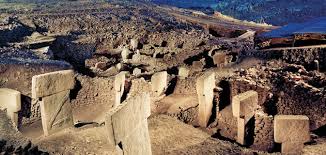
Gobekli
Tepe's Enclosure D (Pic credit: German Archaeological Institute (DAI).
Gobekli Tepe and the Watchers of Eden
Find out the relationship between Gobekli Tepe and the biblical stories of the Garden of Eden, and the Watchers of the book of Enoch. Click below to see a full length lecture from Andrew Collins given in London on Wednesday, October 16, 2013. Filming courtesy of Morris.
And watch an interview afterwards with Andrew discussing these same subjects with the audience.
Gobekli Tepe: Gateway to the Stars
Gobekli Tepe is the oldest complex of stone circles and sanctuaries anywhere in the world. At 11,500 years old it was built in southeast Turkey at the end of the last Ice Age apparently by simple hunter-gatherers. Yet some of its megalithic structures contain carved monoliths as much as 15 tonnes a piece, with a height of 5.5 metres. Who really built these monuments, and why?
I show that Gobekli Tepe was constructed to target the stars, and demonstrate conclusively that it was directed towards the Cygnus constellation and the Milky Way’s Dark Rift. Yet as an astral gateway it was not just used by the souls of the dead to reach the afterlife, or unborn souls to reach incarnation, but also by the souls of shamans journeying between this world and the next. Recorded by Morris at the Sacred Space group meeting in London on October 10, 2013.
https://www.youtube.com/watch?feature=player_embedded&v=H8qeFj6oRII#t=11
Morris interviewed me after as I sat outside a pub in Baker Street, a stone's throw from Sherlock Holmes gaff at 221b. Here is the link to that.
https://www.youtube.com/watch?feature=player_embedded&v=XjtWB6X0tfc#t=45
Watch out for the lunar crescent suddenly appearing on my forehead at 2:05. s, Garden of Eden, etc.
Video
of the Megalithomania Gobekli Tour on YouTube Now
Watch this brief video put together by Hugh Newman of our visit to Gobekli Tepe on September 16, 2013. Graham Hancock chats about the site as a game-changer, in that it urges us to question the age of almost all megalithic monuments worldwide. You also see me leading the tour group, and Hugh recording his first impressions as he first approaches the site.
http://youtu.be/E-Q9cviQcn0
Göbekli
Tepe and the Worship of the Stars:
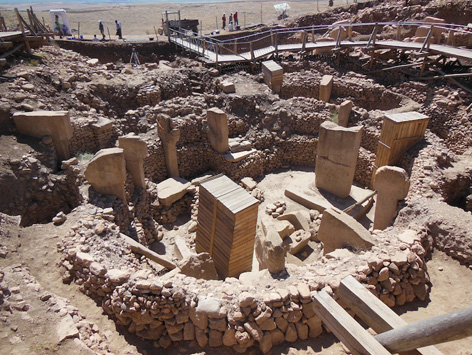
Göbekli
Tepe's Enclosure C (Pic credit: Andrew Collins, 2013)
A Mandaean ceremony that took place on the banks of the Euphrates river in the late nineteenth century provides compelling evidence that the early Neolithic cult sanctuaries of Göbekli Tepe were orientated towards the north, and not towards the south, the direction of the dog-star Sirius
Italian
archaeoastronomer Giulio Magli proposes
that key sanctuaries at Göbekli Tepe are aligned to the rising of Sirius,
c. 9100-8250 BC (Magli, 2013). His theories have received support from New
Scientist magazine, which published a feature on the subject under the headline
"world's oldest temple built to worship the Dog Star".
Yet
as pointed out by chartered engineer Rodney Hale and the author in a detailed
response to Magli's proposal (Collins
& Hale, 2013), there are severe problems in accepting Sirius's role at
Göbekli Tepe, due to its feeble motion and poor visibility at the time. Indeed,
for hundreds of years after its reappearance on the southern horizon in c. 9500
BC (having been invisible from the latitude of Göbekli Tepe for as much as
5,500 years), it would barely have lifted off the horizon, making it unlikely
that in order to venerate this long lost star the Proto-Neolithic hunter-gatherers
of southeast Anatolia (Asiatic Turkey) abandoned their cherished lifestyle to
create the first monumental architecture in human history.
Beyond these problems is the fact that there is overwhelming evidence that the peoples of the Pre-Pottery Neolithic age in southeast Anatolia oriented their buildings not towards the south, the direction of Sirius, but to the north, the direction of the celestial pole and the circumpolar stars (Collins, 2006, 2013, 2014; Collins & Hale, 2013). This realization brings the orientation of these buildings in line with the direction of prayer of religious sects that once thrived in the same region, and may well owe at least some of their beliefs and practices to the Neolithic age.
Click here to read the article
For
a PDF of this article click here
Göbekli
Tepe and the
Rebirth of Sirius

Pic
credit: Rodney Hale/Andrew Collins.
An examination of the night sky during the epoch of Göbekli Tepe's construction shows that the star Sirius was completely unsuitable for star alignments at this time.
Andrew
Collins and Rodney Hale
Göbekli Tepe is the site of a series of stone enclosures built during the tenth and ninth millennia BC on an isolated mountaintop in southeast Anatolia (Turkish Asia Minor). Speculation has mounted regarding their orientation towards stellar objects, with Orion and Cygnus having already been proposed. Sirius is the latest star to be put forward as the primary focus of key monuments at the site. Yet as the authors Andrew Collins and Rodney Hale realise such a conclusion is thwart with problems, not only in connection with the faint appearance and feeble movement of the star during the epoch in question, c. 9500-9000 BC, but also with respect to the orientation and layout of the enclosures themselves. Instead of being orientated to the south, the direction of Sirius, the enclosures are more likely directed to the north, the direction of liminal activities since the Upper Paleolithic age. In this respect, a more suitable stellar candidate for the orientation of the enclosures is Deneb, the brightest star in Cygnus, which marks the opening of the Milky Way's Dark Rift, seen universally in the past as an entrance to the sky-world.
Read the article complete with illustrations and bibliography by clicking here
* To download a full PDF version of this article click here *
Report by Andrew Collins
On
a hilly ridge called Göbekli Tepe in the Taurus Mountains of southeast Turkey,
near the ancient city of Sanliurfa, archaeologists have uncovered the oldest stone
temple complex in the world. Constructed most probably during the second half
of the tenth millennium BC, as much as 7,000 years before Stonehenge and the Great
Pyramid, the site consists of a series of rings of enormous T-shaped pillars,
many bearing carved reliefs of Ice Age animals.
But what exactly were these stone enclosures used for, and are they aligned to the stars? Already there have been claims they are aligned to Taurus, the Pleiades and Orion. Now ancient mysteries writer Andrew Collins brings you all the answers you need. Having first become interested in Göbekli Tepe back in 2000, he visited there in 2004, and returned there in 2012 in order to fully establish the facts before preparing this crucial new article. Read it now by clicking here.
Andrew Collins at Göbekli Tepe, Karahan Tepe, Cayonu, Harran and Sanliurfa in 2004 - A Classic Journey that began the Cygnus Mystery
Read Andrew's record of his journey through southeast Turkey in 2004, visiting Göbekli Tepe years before it because popular, and many other key sites in the region. It was the journey that inspired the writing of The Cygnus Mystery.
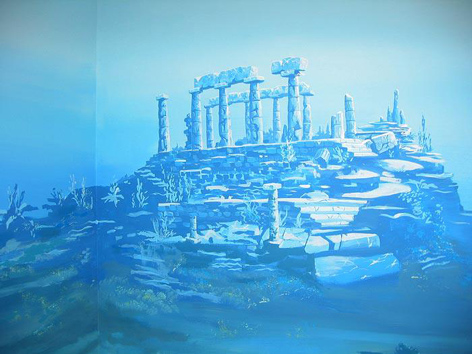
What
Brown's Ruins in the Bahamas might once have looked like
Has
an Atlantean Temple been Discovered in the Bahamas? Andrew Collins Reports
A
new underwater archaeological site in the
Bahamas opens up the mystery once
again
PART
ONE - IS CYGNUS THE KEY TO UNLOCKING
THE PYRAMIDS'GRAND UNIFIED PLAN?
Andrew
Collins, author The Cygnus Mystery and Beneath the Pyramids, Presents
Fresh Evidence that the Cygnus Star System is Behind a Grand Design or Cosmic
Blueprint at Giza
New calculations show that the three "wing" stars of the Cygnus constellation correlate near perfectly with the positions of the Pyramids of Giza. Adding to the mystery is the discovery that the same three stars were seen to set down into their corresponding pyramids at the time of their construction, c. 2600-2500 BC. These findings, established by technical engineer Rodney Hale, make it almost certain that the Giza pyramid field was created to conform to a grand design, a structural blueprint, involving the stars of Cygnus in their capacity as representations of the celestial womb of ancient Egypt's sky-goddess Nuit, for it was here that the deceased pharaoh, in his role as her son Osiris, god of the underworld, achieved rebirth and became at one with the stars.
Click here to read the article
GIZA'S
COSMIC BLUEPRINT
PART
TWO -
IN SEARCH OF THE MOUND OF CREATION
Andrew
Collins, author The Cygnus Mystery and Beneath the Pyramids, Presents
New Evidence that the Cygnus Star System is Behind a Grand Design or Cosmic Blueprint
at Giza
In
Part One of this article we
showed that new calculations reveal how the three "wing" stars of the
Cygnus constellation correlate near perfectly with the positions of the Pyramids
of Giza, both in a vertical and horizontal plane. This raises the question of
whether the Giza pyramid field was created to conform to a grand design, a structral
blueprint, involving the stars of Cygnus in their capacity as representations
of the celestial womb of ancient Egypt's sky-goddess Nuit. Here the soul of the
deceased, as the sun-god, was seen to achieve rebirth.
In Part Two the
author, with the help of chartered engineer Rodney Hale, focuses in on the core
site behind the Cygnus alignments - a potential kom, or occupational mound
just under 3 km southeast of the Giza pyramid field which might link to the concept
of a primeval mound of First Creation (zep tepi).
ADAM'S
CALENDAR:
South Africa's Enigmatic
Stone Ruins Explored
Adam's
Calendar, near Mpumalanga in South Africa
It is one of the hottest subjects in the ancient mysteries subject today. What is Adam's Calendar? Is it really the oldest stone circle in the world? Was it really made by the Annunaki, the alien gods of the Sumerians, as a home base in their quest for earthly gold some 200,000 years ago? Or is it just 75,000 years old, made as a stone calendar aligned to the sun, moon and stars?
Andrew Collins - in South Africa recently for the first Megalithomania conference in that country - joined Adam's Calendar experts Michael Tellinger and Johan Heine, as they attempt to convince him of the site's extreme antiquity. Andrew also explores just a few of the hundreds of thousands of ancient stone ruins dismissed by archaeologists as cattle kraals, pens for cattle, even though they might well have much deeper meanings behind their construction.
For the full story, with a stunning picture gallery, click here.
Stunning
EVP (Electronic Voice Phenomena)
Caught at Ancient American Mound Site in Texas
Greg
and Lora Little by the burial mound Caddoan Mounds State Historical Park
near
Alto in East Texas where Andrew Collins captured the EVP on March 6th, 2011.
This
is the compelling story of how Andrew caught a stunning EVP at
a native American mounds site in East Texas in March 2011
in response to a question posed,
and how it became one of a series of strange synchronicities and discoveries associated
with the Caddo-speaking mound builders who once occupied this region. More significantly,
the EVP is in the Caddoan language, spoken by those who occupied the site and
created the mounds in the first place.
On
Sunday, March 6th, Andrew accompanied Greg and Lora Little to the Caddoan Mounds
State Historical Park near Alto in East Texas, constructed by the Caddo-speaking
Hasinai mound builders sometime between 800 and 1300 AD. Andrew tells the whole
incredible story of how he obtained remarkable evidence of electronic voice phenomena
as the three of them stood before a burial mound where the remains of no less
than ninety individuals were found. Click here
to read the full story, and to hear the EVP click on the YouTube video below (if
this is not possible go this URL to watch it http://www.youtube.com/watch?v=8gbX97Vs2Co).
The Case of the Bosnian Pyramids Examined
A
Report by Andrew Collins from Houston, Texas
Visocica Hill a.k.a. the Bosnian Pyramid of the Sun
In early March Andrew attended the Unearthing Ancient Civilizations conference in Houston, Texas, with Chris Dunn, an expert on ancient Egyptian stone technologies, and Semir "Sam" Osmanagich, the discoverer in 2005 of the so-called Bosnian Pyramids. These are a series of pyramidal hills that are being explored and promoted as artificial structures with given names such as the Pyramid of the Sun, Pyramid of the Moon, Pyramid of the Dragon and Pyramid of Love. Andrew sat in on Osmanagich's stunning visual presentation, which received a standing ovation from the packed audience. Andrew explores what is known about the Bosnian pyramids, and make some important observations about this great mystery of our times. Click here to read the full story.
![]()
For
all older News, go now to News Archives 1
![]()



